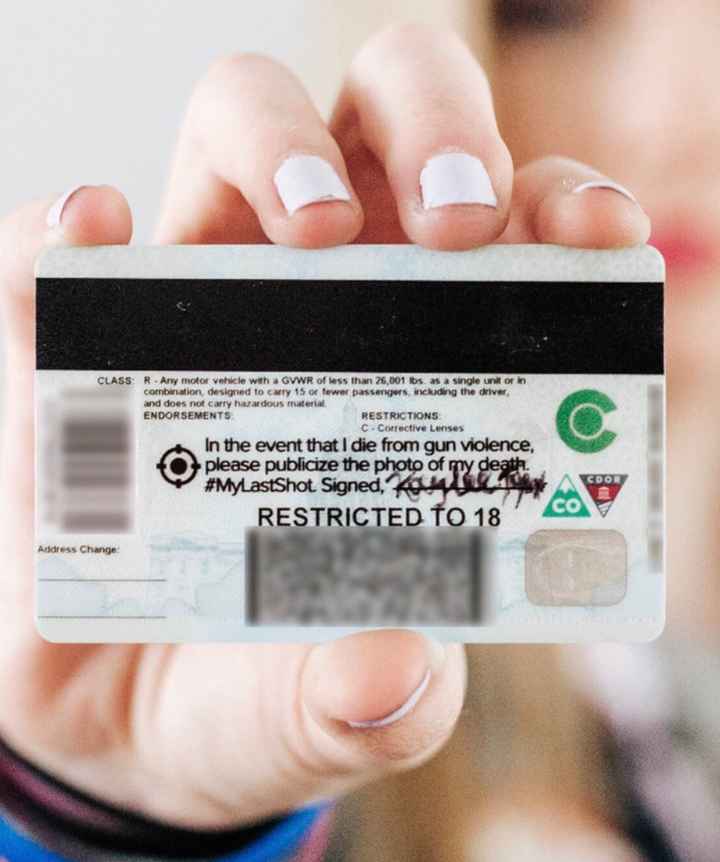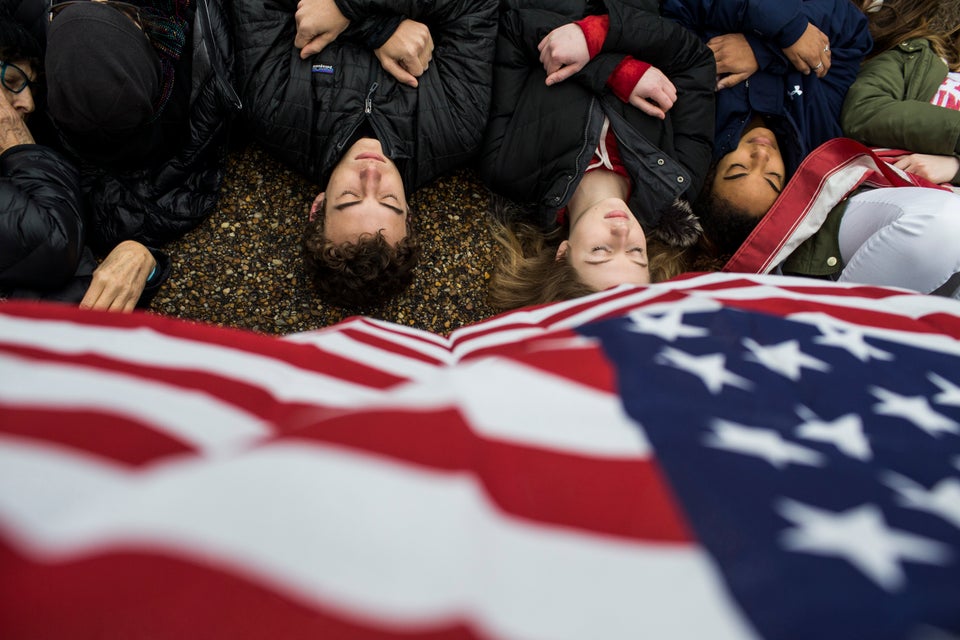This article was originally published August 2019.
Kaylee Tyner graduated from Columbine High School last spring. For the most part, the Colorado teen’s high school experiences were relatively normal: There were football games and dances, and lots of late nights spent cramming for tests.
“But to say that Columbine is a ‘normal’ school would be a lie,” the 18-year-old said. “The shooting always loomed over the school in some sort of capacity.”
Walking those halls as a student, Tyner said it was often impossible not to think about the carnage that took place 20 years ago, when two students walked into the school and killed 13 people in one of the deadliest school shootings in modern American history.
Tyner sometimes worried that it might happen again ― that one day, she might have to crouch under a table and send a furtive “I love you” text to her mom while dodging bullets.
“Some days, it was all I could think about, especially when there was a school shooting in a different part of the country or when I saw people taking photos of my school as if it was a tourist attraction,” she told HuffPost. “One day, our school even had to go on lockdown after someone made a threat.”
Tyner wasn’t even born when the Columbine shooting happened in 1999. But in the years since, she and the rest of Generation Z have seen community after community torn apart by gun violence. It happens in other schools. It happens at movie theaters. It happens at concerts, in churches and in Walmarts.
Efforts to tighten gun laws have gone nowhere, so earlier this year, as the 20th anniversary of the Columbine shooting approached, Tyner decided to push for change herself: She and fellow Columbine students created a hashtag campaign and accompanying website called #mylastshot.
It’s a form of protest, all via a little sticker: To participate in #mylastshot, students attach a sticker to the back of their driver’s license, ID or phone that reads: “In the event that I die from gun violence, please publicize the photo of my death. #MyLastShot. Signed, _____.”

The sticker itself is jarring to see, and it underscores what the teens are fighting for: While many conservative politicians caution against “politicizing the tragedy” after each shooting, Tyner and her peers say they want their deaths to be politicized if they die in a mass shooting. The way they see it, the last photo of their bodies could be the one thing that finally gets legislators to pass common-sense gun reform.
“The youth of America are dying at the hands of our leaders’ inaction and if they’re not willing to face this reality, we will show it to them,” said Emmy Adams, a 19-year-old who helped create #mylastshot.
Adams believes strong visuals can incite change. She pointed to photos throughout history that have swayed popular opinion and led to political change: Horrific images from Vietnam that compelled Americans to question their war efforts in the country, and the open-casket photo of Emmett Till, a 14-year-old African-American boy who was lynched in Mississippi in 1955 after being accused of whistling at a white woman. Both are searing, unforgettable images that show the human cost of social injustice and political inaction.
“Graphic images can spark change and ignite a fire inside people,” said Adams, who knows this firsthand. She became a gun control advocate after watching dozens of harrowing videos students in Parkland, Florida, recorded on their phones during the shooting last year.
It’s a grisly way to make progress, but Adams and other students share the belief that if they’re going to get gunned down by an assault weapon, their deaths might as well mean something.
After the back-to-back shootings in El Paso, Texas, and Dayton, Ohio, earlier this month, more teens (and even adults) shared messages about #mylastshot on social media. The campaign got additional publicity last month when former presidential contender Rep. Eric Swalwell (D-Calif.) tweeted about it.
“A high schooler showed me this sticker on her phone,” Swalwell wrote. “I’m not in this to stand up to the NRA, I’m in it to knock them out of the ring.”
Evan O’Dwyer, a student at the University of North Texas, was one of many who discovered and tweeted about #mylastshot after the shootings earlier this month
“I spoke at the Denton March For Our Lives rally after the Parkland shooting, but sadly, that national movement, created by Parkland survivors, was not enough for Congress to pass gun reform,” she said. “So I would allow images of my dead body to be shared after a mass shooting, if it shows the consequences of their inaction.”
Teachers are participating in #mylastshot, too. James Hamric, a high school math teacher in San Antonio, Texas, recently stuck a sticker on his driver’s license.
Hamric said he’s tired of politicians who offer their “thoughts and prayers” then in the same breath say it’s “too soon to talk about gun control.”
“They say that and then there is another one and the cycle starts over,” he said. “My response is always the same: has it been long enough since Columbine? Since Virginia Tech? Since Sandy Hook? Since Pulse? Since Las Vegas?”
By giving his explicit consent to share details of his death, Hamric figures he’s rendering the “it’s too soon, let’s not politicize this” arguments “pretty much moot.”
Whether a news outlet would have access to photos of him or anyone else after a shooting is one hurdle; whether they would actually share them if they do is another question. Policies on showing images of deaths vary by publication and, often, situation. Assuming that the individual had given permission to use the photo prior to their death and it was available at the time, HuffPost would weigh their permission among other considerations ― such as whether family members have been notified ― when deciding whether to publish graphic photographs of violence.
HuffPost’s policy is that when such images are published, they are always preceded by warnings to readers, and in some cases, readers must opt in to see them. In a recent article about #mylastshot, NPR’s public editor said that ultimately, whether NPR would run such images would also be a case-by-case decision.
The students behind #mylastshot realize there’s no guarantee the media would share images if someone with a sticker were involved in a shooting. Still, with so much of their childhoods spent worrying about gun violence, making the pledge gives them a sense of power and a sense of agency.
“It might be a politically incorrect statement, but we feel the need to make it in order to shock people into action,” Adams said. “There’s a saying, ‘The definition of insanity is doing the same thing over and over again and expecting a different result.’ When it comes to gun violence, the result is lost lives and we can’t afford to continue this cycle.”
